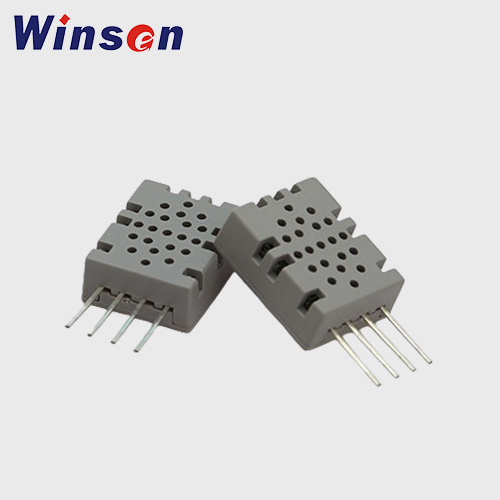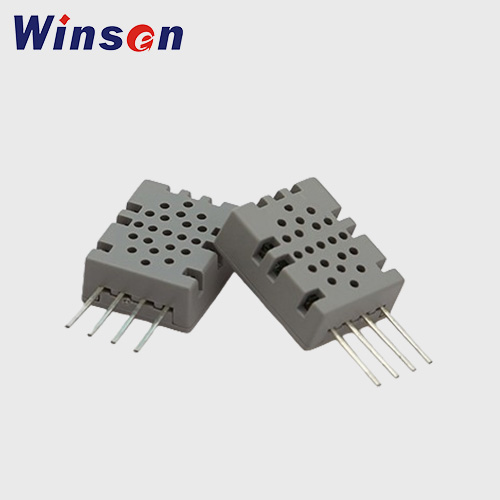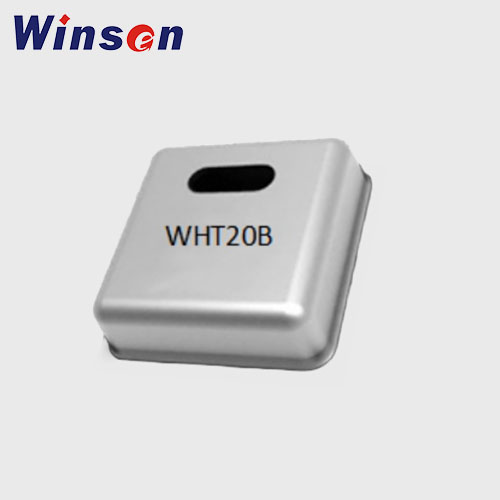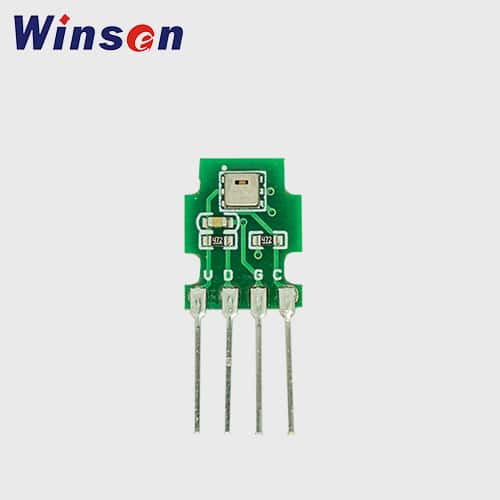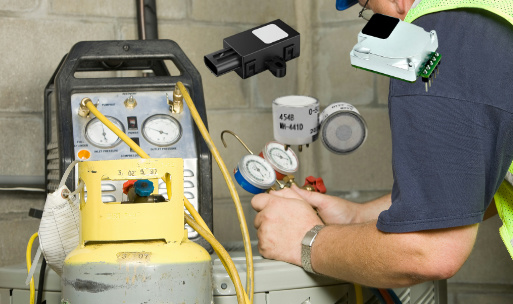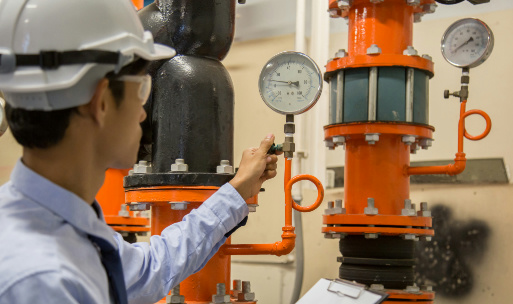Greenhouse planting needs the help of various sensors, such as temperature and humidity sensors, carbon dioxide CO2 sensors, to collect the environmental conditions in the greenhouse. The production of crops is greatly affected by temperature and humidity. Using sensors for measurement and control can effectively prevent severe droughts and floods, and also greatly promote its yield through adjusting to the suitable conditions.
Temperature and Relative Humidity Sensors
Among environmental factors, temperature and humidity are two indicators that are closely related to our lives. Humidity will affect the product life and system performance of electrical appliances, automobiles, and medical equipment, as well as the life cycle of collections in art galleries, museums, and other places.
In cold storage management, humidity sensing ensures proper storage conditions for temperature-sensitive products such as food, beverages and pharmaceuticals; In smart buildings, humidity sensors are deployed to improve occupant comfort and ensure proper custody of valuable assets; in remote monitoring and smart asset management, humidity sensor data streams can improve the accuracy of predictive analytics for condition-based monitoring. Because it is closely related to our life that temperature and humidity sensors have become a very widely used type of sensor.
In many applications, when using a humidity sensor, temperature is the issue that must be considered. Because relative humidity itself changes with temperature, the relative accuracy of the humidity sensor is specified at certain temperature. In places where the temperature changes greatly and is difficult to control, the humidity will also fluctuate accordingly. Therefore, temperature control is an important prerequisite for humidity control.
Smart Home
All kinds of sensor chips after packaging can be used to monitor temperature, humidity, air pressure, air quality and other environments. These sensor devices can be linked with kitchen, bathroom, doors and windows and other scenes and home appliances to form a smart home scene.
Temperature and humidity sensors are widely used wherever temperature changes and water vapor content in the air need to be monitored. It is not only related to the quality of the home environment, but also closely related to human health. It can be said to be a vital part of the smart home. Generally, it can be used to link household appliances as air conditioners, refrigerators, purifiers, HVAC system, humidifier, dehumidifier, smart thermostat, thermohygrometer, room monitor, etc.
Other environmental and security sensors in smart home appliance: gas sensor, PM2.5 sensor,infrared sensor,sound sensor, smoke sensor, door & window magnetic switch sensor, etc.
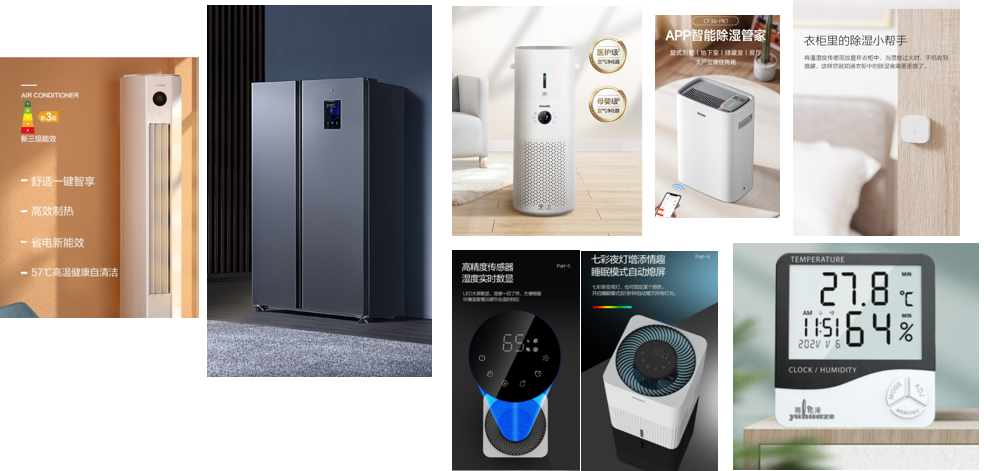
Agricultural Greenhouse
Smart City
Orbital inspection robot in underground corridor
Changing the traditional inspection mode and introducing intelligent robots into the management of underground comprehensive utility corridors can greatly improve the efficiency of corridor operation and maintenance. In China, inspection robots for comprehensive pipeline corridors have been employed in a few cities such as Changsha and Suzhou. The gallery environment can be monitored in real time, providing first-hand data for decision-making by the relevant management departments.
Among the complicated indicators, the monitoring of temperature and humidity conditions is very important. The underground pipe gallery can accommodate a variety of pipelines, such as water, gas, electricity, communication, and heating pipelines that can share the same pipe gallery which more convenient for pipeline maintenance, replacement and increase. But at the same time, the cables and wires that have been in the underground pipe gallery for a long time are also prone to overheating, burning the insulating coating and causing a short circuit. Therefore, it is necessary to deploy sensor to monitor the temperature and humidity of the cables in the tunnel in real time.
With the temperature and humidity sensor, the intelligent track inspection robot system can realize the collection and analysis of environmental data such as the cable temperature, the temperature and humidity in the pipe gallery, and realize the remote monitoring of the equipment, which makes management of the underground corridor more convenient and faster.
Smart trash cans
The new type of smart trash can, usually adopts a new generation of high-tech technologies such as advanced microcomputer control chips, modern sensor technology, mechanical transmission parts, and wireless IoT technology combined with traditional technologies, providing a fast, accurate and convenient waste management system.
Smart garbage cans can be equipped with various sensors such as infrared sensors, ultrasonic sensors, smoke sensors, temperature and humidity sensors, and odor sensors to collect data on garbage cans, monitor and manage them through wireless technology, and use high-energy compressors, blowers, etc. , ozone or negative ion technology to pre-treat the garbage in the can and improve the environment inside and around the bin.
Fire prevention & Sterilization and disinfection function
Firstly, there are some flammable materials in garbage bin, especially in summer, the temperature inside the box is very high and prone to cause garbage spontaneous combustion accidents. With temperature sensor, plus smoke and other sensors, when the temperature exceeds a certain set temperature, especially when detecting a lot of smoke, the bin is able to start fire extinguishing system automatically, and sending alarm to the management.
Secondly, the internal environment of the trash can is generally humid, and it is easy to breed various bacteria and germs. When the humidity is detected too high, the humidity in the bucket can be adjusted by a fan or a dryer. And the barrel can be sterilized by negative ion or ozone technology.
Winsen’s two-in-one ZS05 temperature and humidity sensor module that is popular in the market now is a better choice and saving much space compared with a single temperature sensor or humidity sensor used in the design. ZS05 adopts special digital acquisition technology to ensure high reliability and stability of the product. ZS05 adopts the standard IIC communication mode, can be directly connected to the IIC communication bus, and is easy to use. No calibration is required for use.
Micro Air Station
The micro air station is for real-time data collection for common indicators in the atmospheric environment (TVOC, carbon monoxide, sulfur dioxide, nitrogen dioxide, ozone, PM2.5, PM10, temperature, ambient humidity, wind speed, wind direction), and supports 24-hour online monitoring. The data collected on site is sent to the data aggregation cloud service platform.
The recommended model ZS03 temperature and humidity module is a digital sensor, which uses a polymer resistive humidity sensor and an NTC temperature measuring element, and is equipped with a high-performance single-chip microcomputer. This product has many advantages of good cost, low power consumption, small size, single-wire serial interface, precise calibration, ultra-fast response and strong anti-interference ability.
Use Occasions of Micro Air Station
- 1.Smart city, smart community
- 2.Grid monitoring of urban air quality, weather studies
- 3.Industrial park, enterprise pollution emission monitoring
- 4.Smart transportation,smart light pole,harmful gas monitoring of tunnels, stations
- 5.Hospital, park, tourism site monitoring
- 6.Monitoring of environmental emergencies
- 7.Mobile law enforcement supplementary monitoring, forecast and early warning monitoring
Industrial Field
Most of the automatic measurement and control in the industrial production process mainly rely on various sensors to detect and control various parameters in the production process, so that the system can work in the best state. Temperature and humidity sensor is popular used in automatic control, automotive, inspection and testing device.
Types of Humidity Sensors
Capacitive / resistive humidity sensor
According to the working principle, the humidity sensor is typically to be either capacitive or resistive, while capacitive sensors having a more linear response than resistive sensors.
The capacitive humidity sensor is composed of polar plates and a polymer film between them: when the ambient humidity changes, the water content in the polymer film changes, resulting in a change in the dielectric constant of the capacitor, which in turn leads to a change in the capacitance of the sensor. By measuring capacitance value can calculate the current ambient humidity.
Among the existing humidity sensors of Winsen, digital temperature and humidity modules ZS03, ZS05 and polymer resistance humidity sensor MS-Z3 are the popular resistive sensors. Widely used for warehouse & storage, industrial production, process control, environment monitoring, household appliances, meteorological field, etc.
Winsen ZS03 Temperature and Humidity Module
ZS03 is digital type of temperature and humidity module. It employs polymer resistance-type moisture sensor and NTC, and matches SCM with good performance. It has advantages of high quality, quick response, strong anti-interference digital output, and low cost. Calibration is done before shipping.
MEMS temperature and humidity sensor
The MEMS temperature and humidity sensor is equipped with an ASIC chip, a MEMS capacitive humidity sensing element and a temperature sensing element. The sensor is calibrated and tested for excellent reliability and long-term stability. The accuracy, response time, and measurement range of the product are greatly improved, and welcome for the high-end market.
Winsen also launched a new MEMS temperature and humidity sensor WHT20B, WHT30(to be launched) working on capacitive principle with higher accuracy ±3%RH and smaller size. MEMS sensors are widely used in home appliances (such as HVAC, smart thermostats, room monitors, etc.), industrial fields (such as automobiles, testing and testing equipment, automatic control), consumer electronics, data loggers, weather stations, medical and other related fields of temperature and humidity detection and control.
WHT20B temperature and humidity sensor is a single-chip solution that uses transistor Vbe temperature characteristics to realize high-precision temperature detection (±3%RH), and combines the latest integrated circuit signal processing technology. It is embedded in a dual-row flat leadless SMD package suitable for reflow soldering. The temperature and humidity signals can be read out on different pins. It has small size with bottom 3.0×3.0 mm and the height is 1.0 mm. The sensor outputs a calibrated digital signal in standard I2C format.
ZS11 is a brand new sensor module use WHT20B sensor, which is equipped with special ASIC sensor chip, high-performance semiconductor silicon-based capacitive humidity sensor and a standard on-chip temperature sensor, it uses standard I2C output signal format. ZS11 products have stable performance in high temperature and high humidity environment; At the same time, the product has great advantages in accuracy, response time and measurement range. Each sensor is strictly calibrated and tested before leaving the factory to ensure and meet the large-scale application of customers.
How to choose the fitting type?
| Winsen Temperature & Humidity Sensors | |||||
| Product model | MS-Z3 | ZS03 | ZS05 | ZS11 | WHT20B |
| Product image |  |
 |
 |
 |
 |
| Measurement range | 0~60℃, 20~90%RH | -20~60℃, 20~90%RH | -20~60℃, 20~90%RH | -40~85%, 0-100%RH | -40~85℃, 0~100%RH |
| Detection accuracy | 3%RH | ±1℃,±5%RH | ±1℃,±5%RH | ±0.5℃,±3%RH | ±0.5℃,±3%RH |
| Response time | Absorption ≤30S,Dehumidification≤40s | 5S | 5S | <8s(tau63%) | <8s(tau63%) |
| Stability | 2%RH/year | / | / | / | / |
| Resolution | / | / | ±1℃,±0.1%RH | ±0.01℃,±0.024%RH | ±0.01℃,±0.01%RH |
| Rated volatge | 1.5V AC | 3.3V~5.5V DC | 3.3V~5.5V DC | 2.2V~5.5V | 2.2V~5.5V |
| Communication | / | / | I2C | I2C | I2C |
| Working Principle | Resistive polymer humidity | Resistive polymer element, NTC temperature element | Resistive polymer element, NTC temperature element | ASIC chip, MEMS capacitive element, temperature element | ASIC chip, MEMS capacitive element, temperature element |
For more sensing solutions, contact us now! sales@winsensor.com



